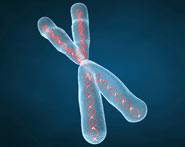


 النبات
النبات
 الحيوان
الحيوان
 الأحياء المجهرية
الأحياء المجهرية
 علم الأمراض
علم الأمراض
 التقانة الإحيائية
التقانة الإحيائية
 التقنية الحيوية المكروبية
التقنية الحيوية المكروبية
 التقنية الحياتية النانوية
التقنية الحياتية النانوية
 علم الأجنة
علم الأجنة
 الأحياء الجزيئي
الأحياء الجزيئي
 علم وظائف الأعضاء
علم وظائف الأعضاء
 الغدد
الغدد
 المضادات الحيوية
المضادات الحيوية|
أقرأ أيضاً
التاريخ: 30-11-2016
التاريخ: 3-12-2016
التاريخ: 30-11-2016
التاريخ: 30-11-2016
|
Implants can be classified as either permanent or temporary devices. Examples of permanent implants include seeds, hip joints, stents, nails, and dental implants, while catheters or needles are perfect examples of temporarily implanted devices. Each year, the number of implants implanted is directly related to the occurrence of the diseases treated this way. The major diseases of the western countries relate to the cardiovascular system, or to cancer. In Germany during 1998, circulatory diseases (including myocardial infarction) caused more than 500000 deaths, or 58% of all deaths[1]. Likewise, more than 210000 people died from cancer, representing 25% of all deaths in Germany that year.
Taking these facts into consideration, there is clearly a great demand for improved treatment of these diseases, and this involves the use of modern medical device technology. This includes the concept of local rather than systemic treatment. Local treatment is the basis of every implant used. For example, when treating diseased vessels with stents the implant is inserted very precisely into the stenotic area; the same holds true for seeds used to treat prostate cancer. Hence, implants represent the ideal carrier for drugs to be delivered locally to the site of implantation. Different carrier systems are currently being evaluated, including polymers, dendrimers, sol–gel-coatings, or other porous inorganic materials. In this chapter, the focus will be on nanoscale inorganic materials for use in local drug delivery rather than polymeric materials, among which nanoporous alumina is one of the most interesting that is currently being used in cardiology and oncology. In a more general approach, specific units such as implantable capsules and pumps can be used as carrier technologies[2], while MEMS devices[3] can be applied to deliver drugs locally. All of these devices must fulfil a vast number of criteria before being used in humans[4]. The basic safety and efficacy requirements can be subdivided into biocompatibility, which can be further subdivided into tissue or hemic compatibility. For these reasons it is difficult to present a complete and comprehensive overview of all inorganic medical devices, and so for technical, medical, and economic reasons the focus here will be on stents and seeds .
[1] Xu, H., Kll, M., Sens. Actuators B 2002, 87, 244–249.
[2] Haes, A.J., Van Duyne, R.P., J. Am. Chem. Soc. 2002, 124, 10596–10604.
[3] Haynes, C.L., Van Duyne, R.P., J. Phys. Chem. B 2001, 105, 5599–5611.
[4] Riboh, J.C., Haes, A.J., McFarland, A.D., Yonzon, C.R., Van Duyne, R.P., J. Phys. Chem. B 2003, 107, 1772–1780



|
|
|
|
يجب مراقبتها بحذر.. علامة في القدم تشير إلى مشاكل خطيرة
|
|
|
|
|
|
|
العلماء يحلون لغز بركان أدى إلى تجمد الأرض قبل 200 عام
|
|
|
|
|
|
|
في الذكرى الـ(104) لتأسيس الجيش العراقي… تعرف كيف كانت المرجعية الدينية العليا تخاطبهم
|
|
|